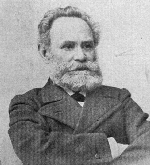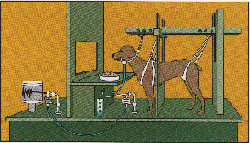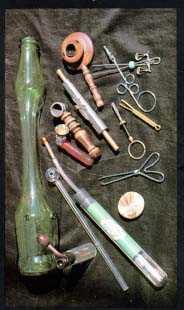
Ivan Pavlov

Ivan Pavlov

In the case of
drug addiction, withdrawal effects need to be present in order for classical
conditioning to be a factor. There needs to be a neutral stimulus
attached to the behavior. For instance the environment, or sensations
associated with the behavior. An unconditioned response would be
the compensatory withdrawal reactions of the brain in response to the presence
of the drug. Once the unconditioned response is associated with the
neutral stimulus, the presence of that neutral stimulus evokes the conditioned
response of the compensatory mechanisms associated with the presence of
the drug, while actually in absence of the drug.
Classical conditioning
therefore tells us that the drug addict's withdrawal symptoms can present
themselves without the actual presence, or possibility of taking the drug.
Posters containing paraphernalia, or even pictures of drugs can initiate
a conditioned response of the withdrawal mechanisms. This can become
overwhelming (consider the physical reasons for addiction) thus throwing
the individual into a fit to find the drug, and ease their discomfort.

For More Information on Classical Conditioning: Classical Conditioning
Home, Definition,
Development,
Pathology,
Sociology,
Treatment